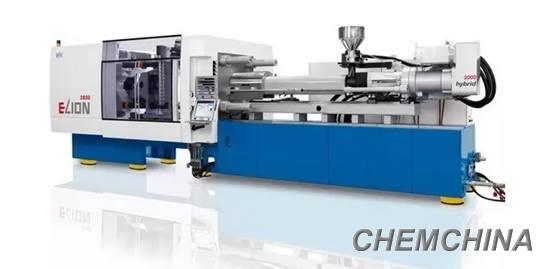Netstal will exhibit its newest high-efficiency injection-compression molding (ICM) technology applied to stack molds at K 2016 by applying this technology to the production of 425-gram margarine boxes made from polypropylene (PP). The box is manufactured with 4+4 cavities on an ELION 2800-2000, with a weigh of only 10.7 g and a cycle time of five seconds. Meanwhile, Netstal will also present the ingenious in-mold labeling (IML) technology which can be applied in mass production.
K 2016|19-26 October|Düsseldorf|Germany
KraussMaffei’s booth number
Hall 15,B27/C24/C27/D24

Less raw materials and lower unit costs
The thin-wall packaging market has more complex requirements for performance and quality, and is increasingly sensitive to prices. However, Netstal strove to work out problems. "As the technology driver in the injection molding industry, Netstal has long thought well beyond the machines. The question always arises as to how we can further optimize maximum performance, quality and efficiency to the benefit of our customers” said Markus Dal Pian, Netstal's Vice President of Marketing & Sales and Head of the Packaging Business Unit. “In the end, the customer expects outstanding quality of the produced parts, lowest possible unit costs and optimized overall operating costs of the system,” added Dal Pian.
In the sample production of a yogurt container, the purchasing price of the injection molding machine has an impact of just 4 percent on the calculation of the unit costs. At around 60 percent, however, the material had an enormous impact on the costs per produced unit. If an IML system is added, the machine component drops even further to merely 3 percent. “Against this background, we have the only aim of continued increases in efficiency,” said Dal Pian.

Greater efficiency, higher quality
Netstal, together with its system partners, presented the highly efficient injection-compression molding technology in a stack mold a few months ago. The injection-compression process is different from conventional injection molding due to the resulting material shrinkage while the melt is cooling in the cavity, also referred to as the "shrinking effect". In conventional injection molding, this is carried out during the hold pressure phase by "pressing in" additional material. Conversely, during the ICM procedure, the "shrinking effect" is compensated by the actual compression process, where material savings of up to 20 percent are realized. Due to the incredibly fast injection times, the filling of the cavities is lightning quick yet extremely even. The reduced pressure means unwanted stresses in the product are avoided. In comparison to conventional injection molding, the pressure distribution in the cavity is extremely uniform which leads to a noticeable reduction in distortion. In summary, the ICM procedure provides significant savings in cycle times as well as material and energy consumption, and increases the quality of produced packaging at the same time. Using a stack mold significantly increases the level of output.
In the comparative calculation, the unit costs can be reduced by up to 10 percent with this process. Through the additional use of an IML system, the packaging manufacturer is given absolute flexibility in regard to shape, appearance and decoration of the produced part. "With this technology, we are dealing our customers the best possible hand for generating competitive advantages and becoming even more successful.” maintained Markus Dal Pian.
High demands on injection molding machine and process control
The machine and its controls must meet very high quality requirements in order to use ICM successfully. For this reason, high-performance injection molding machines from Netstal are optimally suited for the application of the injection compression process. Because corrections of the filling via hold pressure are not possible, extremely high demands on the metering accuracy result. The fundamental requirement for the perfect distribution of the melt in the ICM procedure is an extremely dynamic and precise working clamping unit. To make compression of the material possible, an ultra-fast injection performance (>800 mm/s) is necessary. To achieve the most exact reproducibility, a highly precise and synchronous interaction of the injection unit and clamping unit is imperative. The injection when the clamping unit is in the open state places particularly high demands on the plate parallelism and design of the toggle lever.
About K Show
The International Exhibition for Plastics and Rubber in Düsseldorf, Germany, also known as K Show, is the world’s No.1 trade fair for plastics and rubber. The triennial exhibition has been held successfully for 19 times. The year 2016 will witness the twentieth show.